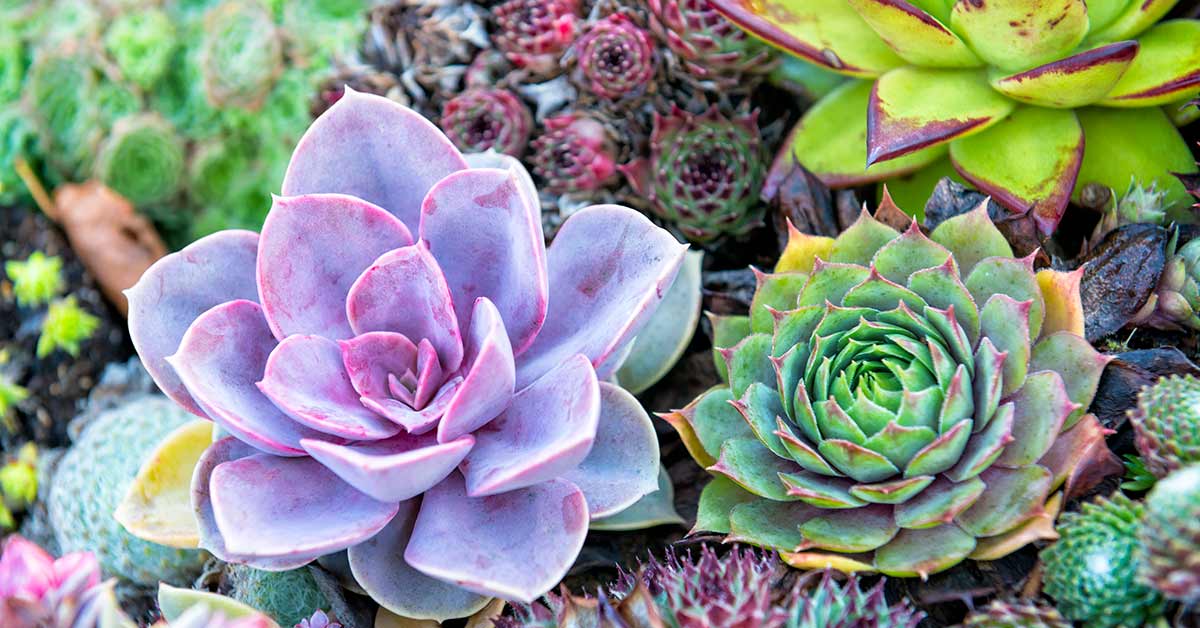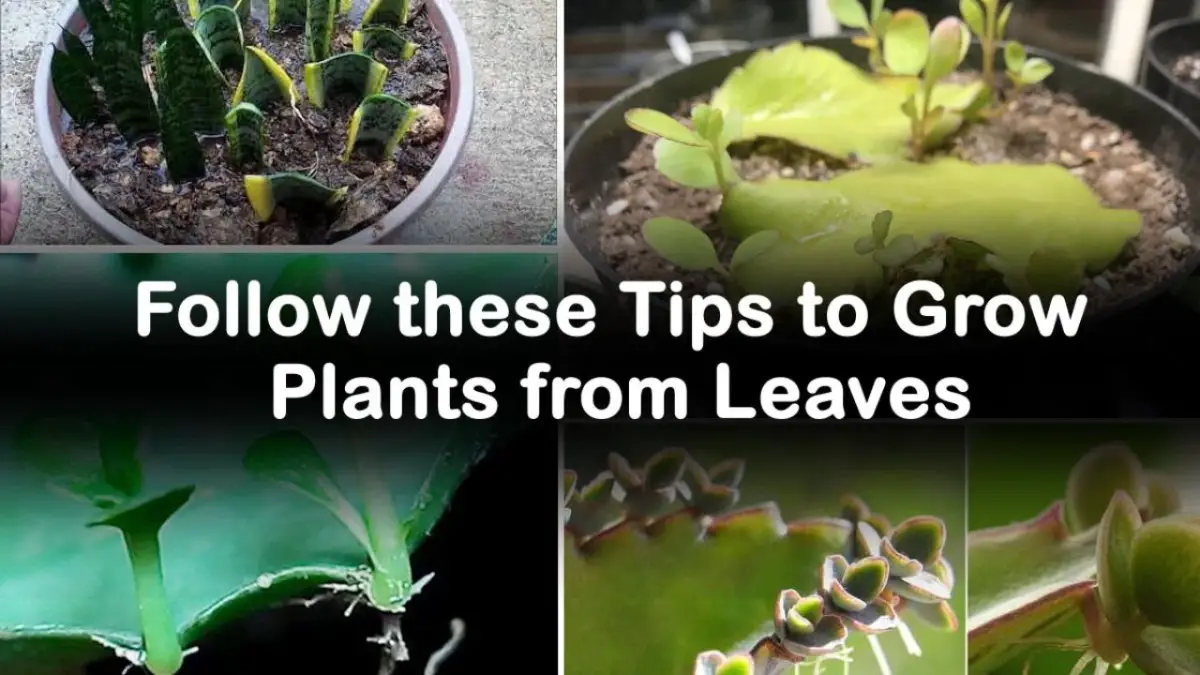Overview
Plants are interesting organisms, which reproduce in different ways. Most need to be grown with seeds but some can actually grow using leaves only. It can be described as asexual reproduction that gives some plants the opportunity to grow from a stem and reproduce rapidly.
In this article we shall see five fascinating examples of plants which grow out of leaves, how this process occurs and what its advantages are in nature and gardens.
What Is Leaf Propagation?
Leaf propagation occurs when a new plant develops using a leaf or part of leaf of a plant. This is a form of asexual reproduction by vegetation familiar to many succulents and a few other plants. The process does not involve pollination or fertilization as it is the case with seed germination.
What happens is rather that plant hormones within the leaf prime root and shoot growth causing an identical plant just through genetic transcription.
It is a technique home gardeners like, since it is simple, cheap and has a tendency to succeed with little care.
1. Bryophyllum (Kalanchoe pinnata)
Also known as: Miracle Leaf, Air Plant, or Cathedral Bells
Propagation Method: Leaf margin buds
One of the most known plants which reproduce themselves through leaves is Bryophyllum. It possesses succulent thick and leafy growth with the formation of minute plantlets on the leaf edges. The parent leaf drops the baby plants who then take root in the soil to become independent plants.
What makes It Unique:
Plantlets are formed by each side of the leaves of Bryophyllum, up to dozens per leaf. These plantlets are well provided with little roots and start growing almost simultaneously with their exposure to moist soil.
Ideal Conditions for Growth:
- Bright but indirect sunlight
- Well-draining succulent soil
- Warm temperatures (above 15°C or 59°F)
Fun Fact:
The traditional medicine applies Bryophyllum as a remedy in infections and wounds due to its antimicrobial effects.
2. Begonia
Also known as: Wax Begonia, Angel Wing Begonia
Propagation Method: Leaf cutting or leaf wedge cutting
The second example of leaf propagation is begonias. Whole leaves, or even parts of a leaf can be used by gardeners in order to nurture a new plant. In the rhizomatous and rex begonias the leaf veins are major areas where roots and shoots originated.
The Reason It is Unique:
A leaf of begonia may be divided into wedges and then each of these parts may begin to make a new plant, provided it contains a principal vein. This is the reason why begonias are great at propagating their many numbers.

Ideal Conditions for Growth:
- Humid warm climate
- The soil should be wet, but not wet.
- Shun the direct sunlight to avoid the case of leaf burn development
Fun Fact:
Begonias have over 1,800 species, many of which are grown for their ornamental foliage.
3. African Violet (Saintpaulia)
Also known as: Saintpaulia
Propagation Method: Leaf stem cutting
Individuals who love indoor plants are fond of African violets due to their fuzzy leaves and also their bright flowers. With one leaf having a short petiole (a stem that links the leaf to the plant) they can grow and bud new individuals.
Why It Is Unique:
The excision should involve the leaf blade, plus part of the petiole. After having been set in moist soil or in water; roots grow out of the cut end, then shoot.
Ideal Conditions for Growth:
- Lukewarm and not chlorinated water is to be used
- Put in clear light, though indirectly
- Maintain high levels of humidity in the area of the cutting
Fun Fact:
African violets are native to Tanzania and were discovered in 1892 by a German colonial official.
4. Snake Plant (Sansevieria trifasciata)
Also known as: Mother-in-law’s Tongue
Propagation Method: Leaf cuttings
Snake plants are robust fashionable house plants that have long, sword shaped leaves. It can be propagated using cuttings of their leaves. The new plants though they do not possess all the variegation of the parent also do very well.
The reasons it is Unique:
Snake plant propagation is done through propagation in water and soil. The cutting must be about 3-4 inches in length, and inserted vertically. After period, roots at the bottom of the cut grow then followed by the shoots of the leaf.
Ideal Conditions for Growth:
- Bright indirect light
- Hang the soil to dry in between water explosions
- Cactus/ succulent soil mix
Fun Fact:
According to NASA, snake plants are among the highest-rated air-cleaning houseplants, which eliminate toxicity, specifically formaldehyde.

5. Jade Plant (Crassula ovata)
Also known as: Money Plant, Lucky Plant
Propagation Method: Leaf or stem cuttings
The jade plant is an old-fashioned succulent that can both propagate through the leaves and stems. A single leaf which falls or breaks could take root and even grow into a new plant provided the suitable environment.
The Uniqueness of It:
When pulling jade plants, the leaves should be allowed to dry out (a day or two) to enable the cut end to callous over. This would avoid rot and the rate of success of propagation would be more.
Ideal Conditions for Growth:
- Clear light, would preferably be a sunny windowsill
- Succulent well-draining soil
- During the early rooting stage minimal watering alone.
Fun Fact:
This culture believes that the jade plant brings good luck and prosperity in life and most people give it out especially at the beginning of the New Year.
Benefits of Growing Plants from Leaves
Growing plants from leaves is not only fun but also offers numerous advantages:
1. Cost-Effective Gardening
There is no need to purchase seeds, or grown up plants. A single plant can be reproduced to more than one plant.
2. Faster Growth
Most seeded plants take longer to realize growth compared to those cultivated through roots as they take long to germinate.
3. Breeding of Preferable Qualities
With propagation, all desirable characteristics such as the color in the leaves, nature of flowers, and hardiness among others, are preserved in the new plants since the plants become clones.
4. Educational Value
Leaf propagation is a wonderful method of educating children and first time gardeners of the facts relating to plant biology and the various forms of plant reproduction.
5. Sustainable Practice
It decreases the use of plants grown commercially and encourages a less dependent form of gardening.
Tips for Successful Leaf Propagation
- Sanitize Your Tools: Doing this will prevent infection by using clean scissors or knives.
- Propagate it by the Appropriate Medium: There are plants that are propagated well in water and there are also plants which are propagated well in soil and or sand.
- Keep on checking the moisture: Do not over-wet the medium. Rot can be caused by over watering.
- Give Light: Direct / bright indirect light is the best source of root and shoot growth.
- Patience: There will be plants that do not grow visibly at least during the first few weeks.
Other Plants That Can Grow from Leaves
While the five examples mentioned above are the most popular, other plants can also propagate from leaves under the right conditions:
- Peperomia
- Sedum
- Echeveria
- Haworthia
- Zamioculcas zamiifolia (ZZ plant) sometimes from leaflets, though slower
Conclusion
Cloning of plants by using leaf propagation is interesting and enjoyable. It does not matter whether you are propagating Bryophyllum with its ready-to-drop plantlets or you are just hoping that an individual leaf of your African violet will grow into a new plant as this process displays the magic of the design of nature.
Leaf propagation not only cuts down the cost better as well as the space but also grants a better understanding of the way in which the plants regenerate to the gardeners and plant lovers.

